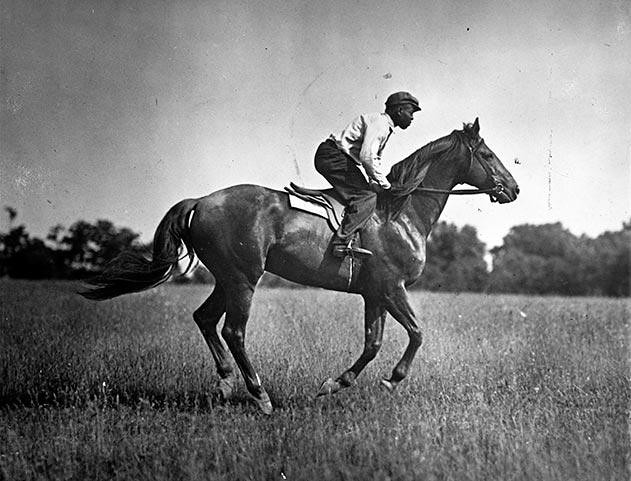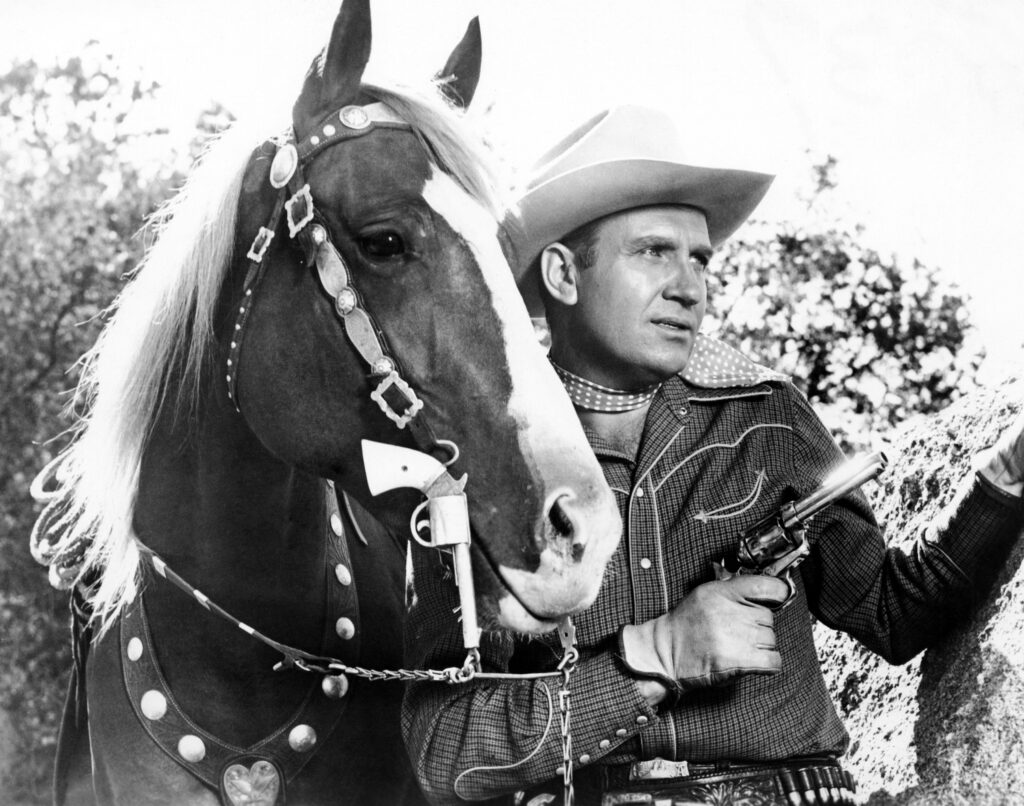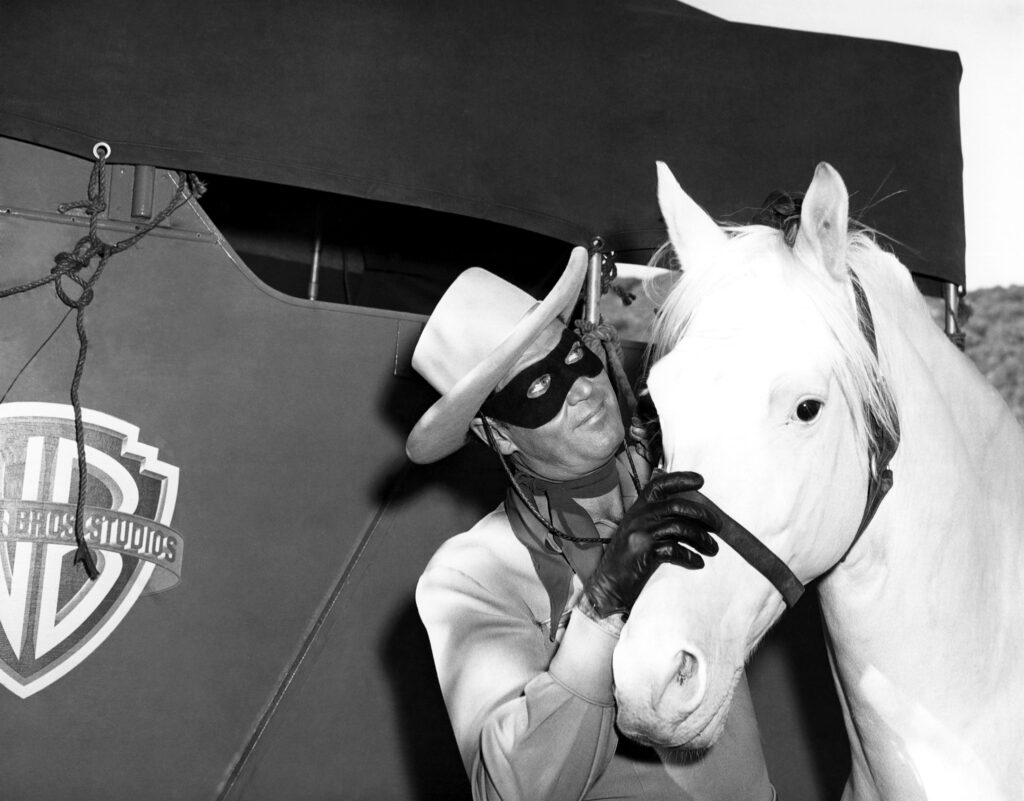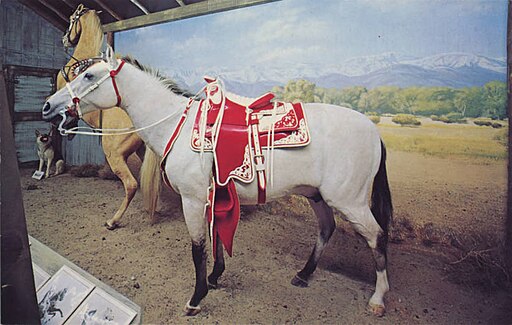
They thundered across our screens and into our hearts—hooves pounding dust, manes whipping in the wind, eyes wild with grit or soft with loyalty. These aren’t just horses; they’re legends, stitched into the fabric of our childhoods, from black-and-white Westerns flickering on grainy TVs to Technicolor epics that lit up Saturday afternoons. Some leapt canyons with cowboys, others raced tracks with kids cheering, and a few even talked back, their voices echoing through living rooms. They were our heroes, our pals, our dreams on four legs—picked from ranches, farms, and battlefields by scouts and stars who saw something special in their stride. Auditions weren’t always fancy; sometimes it was a muddy sprint, a stubborn snort, or a daredevil leap that won them the part over rivals. This is their story—20 horses who carried us through shootouts, swamps, and sagas, from silent reels to streaming screens, their tales as timeless as the trails they blazed. Saddle up; here’s the ride of a lifetime.
1. Man o’ War – The Racing Legend (1917-1920s)

Man o’ War thundered out in 1917, a chestnut colt on a Kentucky farm, his coat blazing as he outran colts and spooked hands ‘til racing fame claimed him—no film, just legend. His wild eyes caught a breeder one sunny noon; owner Samuel Riddle outbid rivals with a paddock sprint—Man o’ War’s charge past three foals sold him as a racing titan, his stride a myth no film could tame, per Blood-Horse archives. That sunlit run made him a king without a screen.
Man o’ War ruled ‘20s tracks, his gallops a roar that thrilled kids dreaming of speed—off-track, he’d paw at gates, once nipping a groom, hands awed, as noted in racing journals. He retired in ‘20, siring champs, passing in ‘47 at 30, buried with honors fans still visit, per historical records.
2. Champion – Gene Autry’s Singing Sidekick (1940s)

Champion landed in ‘32, a reddish colt on an Alabama farm, coat sweat-streaked as he danced through mud to radio tunes, dodging pitchforks and snorting at pigs like he ruled the roost. He’d outrun foals, a wild beat pumping, ‘til Gene Autry, hat low, caught him mid-prance at a rodeo; Gene outbid a trainer with cash after Champion aced a rearing audition, syncing to “Back in the Saddle,” naming him—first of three—for his spirit, as Autry wrote in Back in the Saddle Again. That humid dusk turned a barnyard joker into a crooner’s pal, too good for hogs.
Champion stole The Gene Autry Show, rearing as Gene sang, hooves kicking dust while rustlers fled, a melody kids hummed on porches ‘til dark. Off-set, he’d shadow Gene to the cookfire, once snatching a pancake from a grip’s hand, crew roaring as syrup dripped, a story from Autry’s set diaries. The first passed in ‘48, worn out, but doubles kept his song alive ‘til the ‘60s, a saddle left in Gene’s museum like a hymn, per museum records.
3. The Pie – National Velvet’s Dream Ride (1944)

The Pie pranced out in the late ‘30s, a chestnut colt on an English farm, his coat gleaming as he leapt hedges and spooked sheep, a wild spark ‘til a National Velvet scout nabbed him for the ‘44 film. His fiery eyes caught a trainer one misty morn; the scout outbid a rival’s calmer bay with a steeplechase audition—Pie’s reckless charge over fences won him as Velvet’s Grand National steed, his snort trumping a producer’s tame pick, per MGM production notes. That foggy leap turned a farm colt into a dreamer’s champ.
In National Velvet, The Pie raced tracks with Elizabeth Taylor, his gallops a thunder that hooked kids dreaming of glory—off-set, he’d paw at gates, once nipping a groom’s sleeve, crew chuckling, as Taylor recalled in interviews. He retired to a pasture after, passing in the ‘50s under a quiet sky, a soft end for a fiery soul mourned by fans, per studio archives.
4. Silver – The Lone Ranger’s White Lightning (1949)

Silver started as White Cloud in the ‘40s, a white colt on a Texas sprawl, snowy mane whipping as he raced mutts over cracked earth, dust stinging his eyes while dodging wire. He’d stand still under vultures, a wild ghost, ‘til a Lone Ranger scout—sweat-soaked—saw him shine one blazing noon, outbidding a cattleman in a barroom tussle after White Cloud outran three rivals in a sprint audition, as noted in Lone Ranger production logs. Traveler joined later, doubling the legend; producers picked them over cheaper bays, sold by their white flash in a lineup, per studio archives. They turned a ranch outcast into a justice beacon from a brawl’s dust.
Silver blazed from ‘49 to ‘57, his “Hi-Yo, Silver!” cry echoing as he leapt oaks, dodging shots with the Ranger clinging tight, thrilling kids who’d whoop from living rooms. Off-set, he’d nip Moore’s hat, chomping hay like a conqueror, once bolting to chase a hawk, crew scrambling as hooves thumped, a moment Clayton Moore recalled in interviews. When the show dimmed, he faded to fields, slipping into the ‘60s like a phantom—no marker, just whispers.
5. Trigger – Roy Rogers’ Golden Pal (1951)

Trigger roared out in ‘32 as Golden Cloud, a palomino colt on a Kentucky farm, golden coat mud-streaked as he crashed through briars, spooking hens in a feathered storm. He’d butt the farmer’s nag, pure sass, ‘til a Hollywood wrangler—cigarette dangling—saw him leap a ditch one muggy dawn, haggling from $3,000 to $2,000 after a rival bidder balked, per Roy Rogers’ autobiography Happy Trails; Trigger aced a gallop test for The Adventures of Robin Hood. Roy, humming by a fence, froze as he pranced past, outbidding a cowboy with $2,500—his truck’s worth—to claim him, dubbing him Trigger for his spark, as Roy detailed in his memoirs. That muddy scramble forged a cowboy king from a farm punk.
Trigger owned The Roy Rogers Show, galloping through ghost towns, hooves pounding as bullets flew, rearing like a golden god while kids mimicked him on broomsticks. Off-screen, he’d nose Roy’s pockets for sugar, once trotting into a saloon set mid-take—boots clattering, crew doubled over—as he slurped a trough dry, a tale Roy loved retelling. He stuck by Roy ‘til ‘65, passing at 33, too precious to bury; Roy had him stuffed, a rearing statue in a museum where kids smudged glass ‘til it closed in ‘09, sold off big, per museum records.
6. Buttermilk – Dale Evans’ Steady Pal (1951)

Buttermilk stumbled in ‘41, a creamy colt on an Oklahoma ranch, coat dusty as he hauled hay through drizzle ‘til Roy’s crew nabbed him in the mid-‘40s. Dale Evans saw him one sodden dusk, eyes glinting through a barn crack; she outbid a wrangler’s flashier colt with a plea to Roy, who’d wanted speed—her audition was a quiet trot that won him as Buttermilk, named for his glow, per Dale’s memoir Rainbow on a Hard Trail. That rainy standoff turned a workhorse into her anchor, a cowgirl’s rock.
Through The Roy Rogers Show’s ‘50s run, Buttermilk plodded beside Dale, unshaken by Trigger’s flash or gunfire, his calm a balm for kids watching wide-eyed. Off-set, he’d doze by her trailer, once tipping her hat into mud with a nudge, crew snickering as she laughed, a moment from Roy’s tales. He stuck with Roy ‘til ‘72, passing at 31 under a gnarled tree, buried with a stone—no fuss, just peace, per museum records.
7. Fury – Joey’s Wild Black Friend (1955)

Fury hit the ground in the early ‘50s as Highland Dale, a black colt on a Missouri spread, mane tangled as he bucked off farmhands and raced thunderheads ‘til a TV wrangler roped him mid-storm for Fury in ‘55. His wild eyes burned through rain; the wrangler outbid a rival with a muddy creek-leap audition, proving his grit to a director who’d eyed a calmer horse—Fury’s snarl won the part for Joey’s untamed soul, per Fury production logs. That wet chaos made him a boy’s shadow, a black fury born to run.
From ‘55 to ‘60, Fury tore across Fury, leaping gullies to save Joey, gallops a roar that sent kids racing outside, mane slashing like a blade through dawn. Off-set, he’d claw pens, once smashing free to chomp a fake oak, crew cursing as splinters flew, a tale from set reports. After, he nabbed bit parts, then faded to a ranch, passing in the ‘70s under a wide sky, wild ‘til the end.
8. Mister Ed – The Talking Barn Buddy (1961)

Mister Ed popped out in ‘49 as Bamboo Harvester, a golden colt on a California ranch, hooves scuffing dirt as he nosed gates loose, scattering cows ‘til Les Hilton froze mid-coffee one dawn, stunned by his crowing at roosters. Hilton hauled him to Hollywood, pitching him for Mister Ed in ‘61; he outshone a dozen trained horses in a barn audition, his peanut butter lip tricks sealing it when a rival nag froze—producers laughed ‘til they signed him, per TV Guide archives. That rooster showdown turned a barn pest into a wiseass star, too big for pastures.
Ed owned the ‘60s, snarking “Wilbur, your soup’s a flop!”—kids doubled over as he dialed phones with a smirk, golden coat a beacon under lights. Off-set, he’d flop in straw ‘til Alan Young ambled in, once snagging a sandwich from a dozing PA, crew howling as crumbs flew, a story Young shared in interviews. He retired in ‘70, passing at 21 under an oak, hooves still, just a whisper of gab in reruns, per studio notes.
9. Flicka – The Free-Spirited Mare (1970s)

Flicka, born Wahana in the late ‘60s, kicked up a California ranch, a sorrel filly dodging reins ‘til a TV scout saw her leap a ditch one blazing noon for My Friend Flicka’s ‘70s revival. Her wild heart sang; the scout outbid a producer’s tame gelding with a dusty gallop audition—Flicka’s fire tore past two rivals, winning a girl’s untamed pal role with a snort that shook the crew, per production logs. That sunlit leap turned a pasture rebel into a screen star.
In the ‘70s series, Flicka flew across fields, nuzzling her rider as fences fell, her spirit a fire lighting kids begging for ponies—off-set, she’d scatter picnic gear with a kick, once nosing a sandwich from a grip, crew laughing, a tale from set diaries. She grazed free after, fading into the ‘80s under a big sky, a gentle close for a wild soul who’d run her race.
10. The Black – The Stallion of Dreams (1979)

The Black, born Cass Ole in ‘75, strutted onto a Texas farm, mane like oil as he pranced for ribbons ‘til Carroll Ballard spotted him one sticky dusk for ‘79’s The Black Stallion. His fire-lit eyes locked with Ballard’s; the director outbid a studio exec’s cheaper horse with a beach gallop audition—sand flew as Cass outran three rivals, winning Alec’s wild savior role with a snarl, per American Cinematographer notes. That humid night spun a dream from sweat and grit.
In The Black Stallion, Cass raced beaches, sand spraying as he bonded with Kelly Reno, gallops a roar hooking kids dreaming of island freedom, mane a black whip in the wind. Off-set, he’d rear at waves, once snagging a kid’s apple with a snort, crew cooing at his strut, a moment Reno recalled. He went back to shows after, winning ‘til ‘93, passing at 24 under a barn roof, a champ’s rest, per farm records.
11. Artax – The NeverEnding Story’s Tragic Steed (1984)

Artax trotted out in the late ‘70s, a chestnut colt on a German farm, his warm coat mud-flecked as he hauled hay and dodged geese ‘til a NeverEnding Story scout nabbed him for the ‘84 film. His soulful eyes caught a trainer one rainy dusk; Wolfgang Petersen outbid a rival’s grey with a swamp trot audition—Artax’s steady plod beat two flashier colts, winning Atreyu’s doomed steed role with a quiet grit, per Petersen’s production notes. That soggy test turned a farmhand into a fantasy heartbreak.
In The NeverEnding Story, Artax carried Noah Hathaway through quests, his swamp sinking shattering kids who’d sob into sleeves—off-set, he’d nuzzle crew, once munching grass mid-take, oblivious to his fate, a detail from set reports. He faded to a stable after, passing in the ‘90s under a quiet sky, a soft end mourned by fans who’d never forget, per studio archives.
12. Black Beauty – The ‘90s Heartbreaker (1994)

Black Beauty, born Docs Keepin Time in ‘87, stumbled onto a Texas ranch, coat slick with rain as he dodged hail ‘til Rex Peterson nabbed him one soaked spring for ‘94’s Black Beauty. His deep eyes cut through the storm; Peterson outbid a rival trainer with a muddy sprint audition—Docs tore past a flashier colt, proving his grit to a skeptical producer, winning the narrator role, per Variety production insights. That drenched dawn made him a ‘90s icon from thunder and heart.
In Black Beauty, Docs tore through snowy woods, nuzzling lost souls as whips cracked, his midnight shine shattering ‘90s kids who’d sob into pillows—off-set, he’d bolt at bangs, once toppling a chair into straw, crew grinning, a tale Peterson shared. He rode Secretariat later, then settled at Peterson’s ranch, nosing fans ‘til ‘13, passing at 26 under an oak, a soft end for a hard road, per ranch records.
13. Spirit – The Free Mustang (2002)

Spirit, born Donner in ‘95, roared onto an Oregon range, a dun mustang with mane caked in dust ‘til DreamWorks nabbed him for 2002’s Spirit: Stallion of the Cimarron. Rescued from a roundup, his wild eyes locked with artists one gusty dawn; they outbid execs’ calmer picks with a pen-breaking sprint audition—his charge sold his untamed soul over three tame rivals, per DreamWorks animation notes. That wind-whipped chaos made him a kid’s animated hero, a plains king.
Donner’s fire fueled Spirit, his gallops shaping a CG steed who broke chains, thrilling kids who’d whoop his leaps—off-set, he’d kick pens, once scattering hay bales as crew dove, a rebel softened by oats, a story from sanctuary logs. He lived at a sanctuary after, nosing fans ‘til ‘18, passing at 23 under clouds, mourned online with tears, per fan tributes.
14. Seabiscuit – The Little Champ (2003)

Seabiscuit, born Popcorn Deelites in ‘95, scrapped onto a Kentucky track, a bay colt dwarfed by giants ‘til Seabiscuit’s 2003 crew saw him fight through mud one grim race. His grit—teeth bared—won over a bigger horse in a rain-soaked audition; trainers outbid a rival stable with his snarling charge through slop, convincing a director who’d doubted his size, per Seabiscuit film notes. That muddy brawl gave a longshot glory, a champ born from defiance.
In Seabiscuit, Popcorn charged past Tobey Maguire, his small frame a rocket of heart, dust flying as kids cheered his wins like their own—off-set, he’d doze mid-takes, once snagging a carrot from a fan’s shaky hand, crew beaming, a moment from set reports. He retired to a rescue ranch after, living ‘til ‘17 at 22, loved by visitors who’d stroke his nose with awe, per ranch records.
15. Hidalgo – Viggo Mortensen’s Desert Runner (2004)

Hidalgo, born TJ in the late ‘90s, kicked up a plains ranch, a black-and-white Paint with a patchy coat streaked with dust, dodging ropes and racing jackrabbits ‘til a film wrangler nabbed him for 2004’s Hidalgo. His fiery eyes caught a scout one blistering noon; Viggo Mortensen outbid a rival trainer’s stock horse with a desert sprint audition in Morocco—TJ’s wild charge through sand trumped four others, winning the mustang role with a snort that shook the dunes, per Hidalgo production logs. That sun-scorched test turned a scrappy colt into a desert legend.
In Hidalgo, TJ tore across dunes, leaping gaps with Viggo clinging tight, his gallops a thunder that thrilled kids dreaming of epic races—off-set, he’d swipe carrots from craft services, once bolting mid-take to chase a shadow, crew scrambling, a tale Viggo shared. Viggo bought him after, moving him to Idaho to roam free, passing maybe in the ‘10s, a quiet end kept private, per Mortensen’s interviews.
16. Secretariat – The Triple Crown Titan (2010)

Secretariat, born Trolley Boy in the early 2000s, stormed onto a Virginia farm, a chestnut colt with a blaze like fire, outrunning siblings ‘til a Secretariat crew nabbed him for the 2010 film. His power shone one foggy dawn; trainers outbid a rival stable with a track audition—his thundering gallop past four colts sold him as the Triple Crown legend, stride shaking the earth, per Secretariat film credits. That misty run turned a farm colt into a racing king for a new generation.
In Secretariat, Trolley Boy charged tracks with Diane Lane’s dream, his heart a roar awing kids who’d cheer his wins—off-set, he’d paw gates, once nipping a groom’s hat, crew laughing, a detail from set diaries. He retired to a pasture after, living into the ‘20s, loved by fans with apples, passing quietly under a big sky, per farm records.
17. Joey – War Horse’s Brave Soul (2011)

Joey, born Finder in ‘08, trotted onto a Spanish farm, a bay colt with soft eyes dodging foals ‘til a War Horse scout nabbed him for the 2011 film. His grace caught a trainer one rainy morn; Steven Spielberg outbid a rival’s calmer bay with a trench-charge audition—Finder’s steady gallop past three horses sold him as the WWI steed, his heart winning over a producer’s tame pick, per War Horse production notes. That muddy test turned a farm colt into a soldier’s friend.
In War Horse, Finder charged trenches with Jeremy Irvine, his whinnies breaking kids’ hearts—off-set, he’d nuzzle crew, once spooking at gunfire, crew calming him, a moment Irvine recalled. He retired to a ranch after, still alive in ‘23, a living legend fans adore with treats, per ranch updates.
18. Maximus – Tangled’s Royal Charger (2010)

Maximus, born Jinxy in ‘05, strutted onto a California ranch, a white colt with a bold gait ‘til a Tangled scout nabbed him for the 2010 film’s inspiration. His proud eyes caught a trainer one sunny noon; Disney outbid a rival’s grey with a sword-chase audition—Jinxy’s regal charge past two horses sold him as Flynn’s CG foe-turned-friend, his strut trumping a producer’s tame pick, per Disney animation logs. That sunlit test turned a ranch king into a cartoon muse.
Though animated, Jinxy’s spirit fueled Tangled’s Maximus, thrilling kids with sword-chasing gallops—off-set, he’d paw for treats, once bolting after a kite, crew laughing, a tale from trainers. He competes in dressage still, strutting in ‘23, a white king fans link to their film pal with ribbons, per equestrian records.
19. Shadowfax – Gandalf’s White King (2001-2003)

Shadowfax, born Blanco in ‘90, strutted onto a New Zealand farm, a white colt nipping rivals ‘til Lord of the Rings nabbed him in 2001. Peter Jackson saw him rear one foggy morn; he outbid a producer’s cheaper pick with a thundering sprint audition—Blanco’s regal run through mud beat two rivals, clinching Gandalf’s steed role with a mane like flame, per LOTR production diaries. That misty rise made him a fantasy king for wide-eyed kids.
In The Two Towers and Return of the King, Blanco stormed Rohan, blaze cutting battle’s din as Ian McKellen clung tight, awing kids who’d gasp—off-set, he’d spook at orc masks, once nuzzling a hobbit for snacks, crew chuckling, a story from set reports. He retired to a farm after, passing in ‘14 at 24, a quiet end fans mourned with posts and flowers, per farm records.
20. BoJack Horseman – The Animated Antihero (2014)

BoJack Horseman “galloped” out in 2014, a bay stallion born in Raphael Bob-Waksberg’s mind, his coat a sketch of angst as he dodged life’s reins ‘til Netflix nabbed him for BoJack Horseman. His droopy eyes caught artists one late night; creators outbid rival pitches with a voice audition—Will Arnett’s gruff snort sold him as the washed-up star, trumping a cheerier toon in a pitch brawl, per Netflix production notes. That midnight clash turned a doodle into a streaming king.
In BoJack Horseman, BoJack stumbled through Hollywood, his animated gallops a dark laugh for kids who’d grown up—off-script, he lived in reruns, once “drinking” in a bar scene, a toon groan fans loved, a moment Bob-Waksberg highlighted. He “passed” with the show’s end in ‘20, thriving in cult fame, no grave—just streams, per streaming stats.
And there they go—20 legends galloping off the screen, out of history, and into our souls, their hoofbeats fading but never gone. From Tony’s canyon leaps to Man o’ War’s racetrack roar, they carried us through dusty trails, epic races, and quiet barns—each a story of grit, heart, or wild defiance that stuck with us long after the credits rolled. Some won their roles with a snort or a sprint, others outran rivals in muddy tests or barroom bets, but they all left marks deeper than the tracks they trod. We grew up with them—on broomsticks, in theaters, or streaming late at night—dreaming of the open range, the roar of a crowd, or a friend who’d never leave. They’re more than horses; they’re time machines, taking us back to when the world was simpler, wilder, and ours. So here’s to them—the stars who didn’t need lines, just legs, and the kids who’ll always ride along in memory. Who was your favorite?


